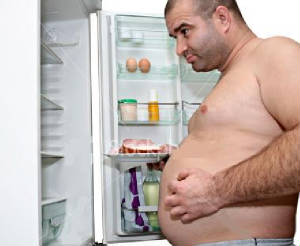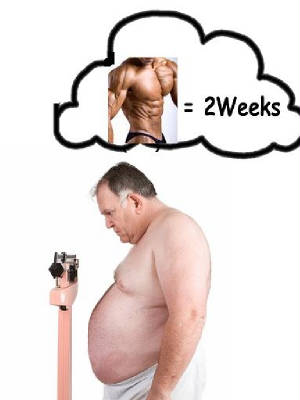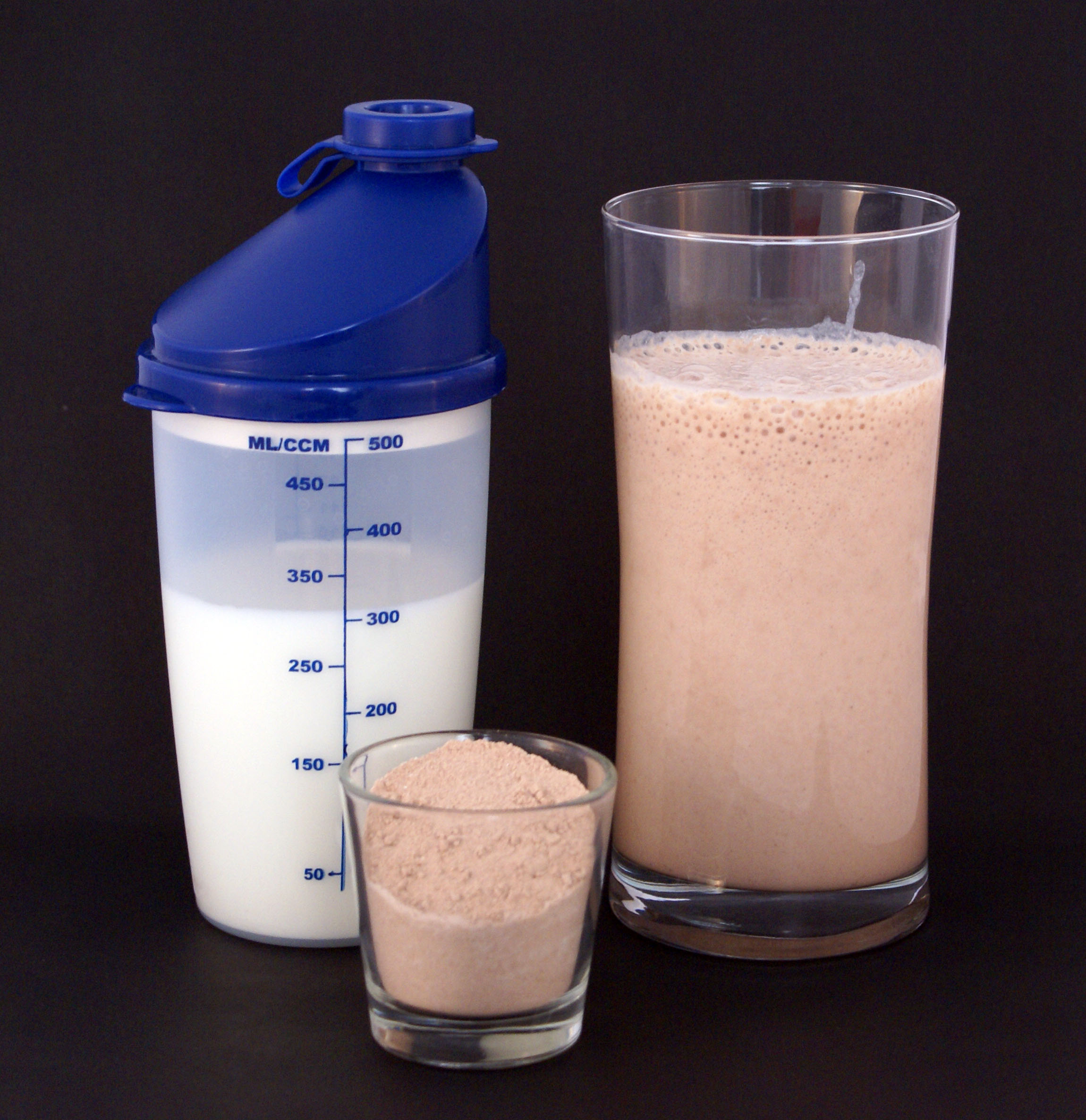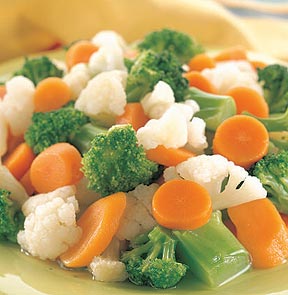|
With the first of the year rapidly approaching, we
are about to enter what I like to call “diet season”. Diet season is those first few months of the year where
people resolve to get themselves in better shape and of course loose some extra weight that they have put on.

You
would assume a person who earns their bread and butter from advising people about their nutrition would love diet season.
For me the opposite is somewhat true. For every one person who is serious about improving their nutrition and fitness you
get ten more people who know nothing about dieting and exercising, but have all the nutritional answers, ten more “ultimate”
diets and weight loss programs , and the occasional “Why do I want nutritional advice, just don’t eat and I’ll
loose weight.” The other day someone asked “What’s the best free weight loss advice could I give them?”
I simply stated “Hire a qualified professional like myself to do your nutrition!” Most people fail during “diet
season” because they don’t use practical approaches to weight loss. What
a lot of people do not do is give their bodies time to make subtle changes before jumping into a full blown change of diet.
Did you know with a couple slight changes, within two to three weeks you could be down a road to a healthier you without even
realizing it. Here are ten tidbits you can use than you can use to help you with your diet goals:
· Set practical weight loss goals-
One big reason why people fail at weight loss is they set too big of a goal in too short of a time. Setting a
goal of loosing 30 pounds in three weeks is not practical or reasonable. When people make their goals to high they get frustrated
and quit. Set reasonable goals and your chances of achieving them becomes far more likely. Understand a good weight loss is
1.5 to 2 pounds per week anymore than that could be leading you down a road of frustration and failure. When setting a weight
loss goal set a number of pounds you want to loose and then cut that number in half. That number should be your practical
goal. Once you achieve that then you can set another goal after that.

· Give your body a
transition period-
Before embarking on any weight loss program slowly adjust into it. I always tell people before they try to make
any radical changes to their diet, take two weeks to make small slight adjustments first. It’s the small adjustments
that actually make a difference because gradual small changes are easier to stick to than one massive change.
· During your first week of your two week
adjustment period, make no changes to your diet except-
Eat
smaller amounts of your same foods. One of the main problems people have with weight loss is portion control. By not making
a single adjustment to your diet but reducing the amount of food you take in, you can reduce a significant amount of calories
that you take in. This calorie reduction also teaches your body how to start working in a reduced calorie environment.
Don't change what you eat the first week! Just change the amount!
· Learn to eat six
times a day-
Use these first two weeks to learn to eat six times a day. Break up your daily intake of food in six meals. Why
six meals? At six meals a day you’re averaging eating every three to three and a half hours. By eating every few hours
you keep your metabolism constantly ramped.
· During the second
week of your adjustment period, turn one or two of your meals into light protein meals-
Protein is probably the most important macronutrient affecting your metabolic rate. Quality protein also helps
spare muscle tissue during weight loss. The more muscle you have during weight loss the more favorable it is for your metabolism.
In the second week of your transition period turn one or two of your six meals in small protein meals. 3 oz of lean chicken breast or 1 scoop of whey protein in water
will generally do the trick for you

· During the second
week of your adjustment period, replace two servings of carbs for two servings
of fibrous veggies to your diet-
Fibrous vegetables are important for a diet because they provide “bulk” to a diet. You can eat a
ton of these veggies and they provide very little calories to the diet. Take broccoli for example. Three cups of broccoli
is only 24 calories as opposed to one cup of rice which is anywhere from 45-50 grams of carbs based on the grain of rice.
During your second week, replace two of your carb sources with two one cup serving of fibrous veggies.

· Start drinking water
with each of your six meals-
One of the most overlooked aspects of weight loss is water intake. Our bodies are made up of 70% water so it
only makes sense we should consume a lot of it. Water is important for weight
loss because burning calories creates toxins in the body, and water plays a key role in flushing them out. Water is also a
main component in fighting dehydration. A dehydrated body is not as efficient at burning calories as a hydrated body. If you
not already a water drinker start by drinking 12 ounces (a cup and a half) of water with each of your six meals. This will
give you a little more than a half a gallon a day. By your second week you want to continue to drink your water but also replace
half of your non-water drinks with water. In other words if you drink four sodas a day replace 2 of those with water. This
will help bring your water intake up and reduce a bunch of sugary calories from your diet.
· Add a multi-vitamin
to your diet-
You should be taking a multi-vitamin everyday. If you’re not
taking one, you should start. Multi-vitamins not only make up for deficiencies
we may have but also help in a lot of metabolic processes, provide energy, and also help remove toxins and provide us with
anti-oxidants. Start supplementing your body with a multi-vitamin once a day. By your second week, start taking a multi-vitamin twice a day. Take a vitamin in the morning and one late afternoon.
· Use your legs more-
What does this tidbit have to do with dieting? Dieting is all about putting less calories into your system than
you burn. If you burn more calories it is like you are putting in less calories in your system. A simple way to get started
burning more calories is simply to use your legs more. If your traveling to the
store or running errands, park a little further away than you normally would and walk some more. If you have to go to a building where you have to use the elevator, try use the stairs instead. If you
have to go some place that is walking distance away, try walking instead of driving. You won’t burn the same amount
of calories as a good exercise program but every little bit helps.

·
Take
every practical approach we discussed and expand on it-
By the third week, you should be able to physically and mentally take every approach we discussed and expand
on it.
Set practical weight loss goals
Now that you set a reasonable goal, figure out what little thinks you can do to keep you motivated to stay focused
on your goal
Give your body a transition period-
Now that you have been transitioning for a couple of weeks, tighten things up a bit more nutritionally as you
start to move into a true weight loss program
During the second week of your adjustment period, turn one or two of your meals into light protein
meals-
By week
three you still want your light protein meals but you also want to incorporate more protein in your diet. Aim to have some
form of protein in 3-5 of your daily meals
During the second
week of your adjustment period, replace two servings of carbs for two servings of fibrous veggies to your diet-
From week three on aim to eat 3-4 servings of fibrous veggies in your diet
Start drinking water with each of your six meals-
From week 3 on not only should you be drinking water with each of your six meals but you should eliminate most
of your non-water drinks. Sugary sodas and juices should be replaced with water. If you need a sweet taste when you drink
aim for sugar free drinks like Crystal light.
Add a multi-vitamin to your diet twice a day-
Along with a good multi-vitamin to supplement your diet look into adding minerals, like calcium or healthy supplemental fats like omega 6’s and omega
3’s
Use
your legs more-
Sure a little extra walking and a few extra stairs was a good start but you should seriously be thinking about a exercise program to go with your new dietary ways. No one says set out to
be Mr. or Ms. Olympia but some extra gym time will go a long way for building muscle and burning calories.
Here is a week by week breakdown of your practical approaches:
Week 1:
o Start your transition period for weight loss
o Make a practical weight loss goal
o Make no changes to your diet but eat smaller meals
o Start breaking up your food intake into six meals
a day
o Start drinking 12 oz of water with each of your
six meals
o Start Taking a multi-vitamin once a day(preferably
in the morning)
o Do a little more walking from place to place
Week 2:
o Continue on your transition
o Continue to break your food up into six meals
a day
o Continue to drink your 12 oz of water per meal
but also replace half of your non water drinks with water now
o Replace one of your six meals with just a small
protein meal
o Replace two servings of daily carbs with fibrous
veggies
o Begin to take a second multi-vitamin in the late
afternoon
o Start finding more ways to walk and take steps
when going from place to place
Week 3:
o Expand on everything you have been doing the past
couple weeks
o Limit your sugary non water drinks to 1 or 2 a
day and consume more water
o Start looking into other supplements for your
diet-like fish oils
o Begin thinking about an actual exercise program
for fitness
o Aim to get 3-4 servings of fibrous veggies in
your diet
o Aim to have some form of protein in 3-5 of your
daily meals
|

